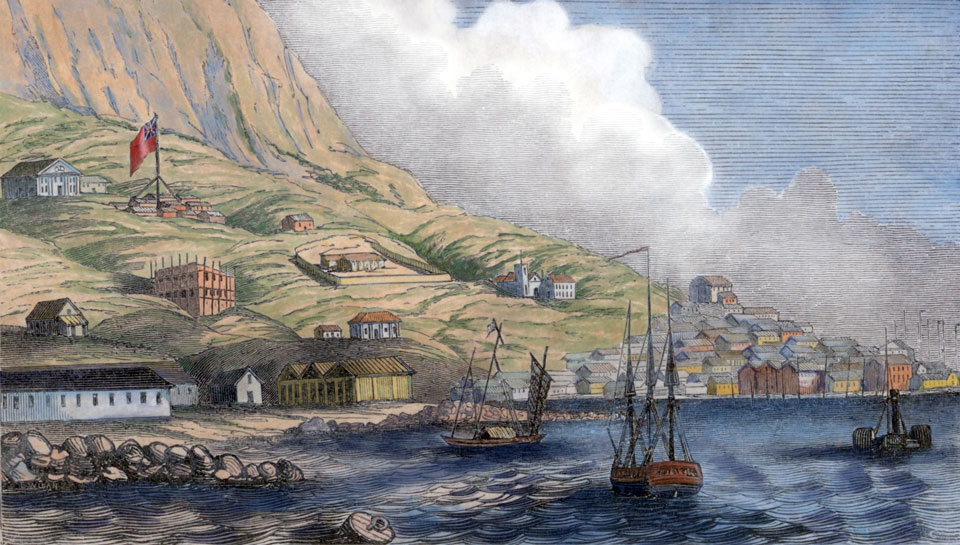Imperial Echoes: 22 Leaders, and their Lessons, and Legacies

Throughout the annals of history, the rise and fall of empires have been a recurrent theme, shaping the course of human civilization. At the dawn of the 20th century, several global empires held sway, spanning Africa, Asia, and the Americas.
The quest for imperial dominance triggered World War I, leading to the dissolution of imperial systems in Germany, Russia, Austria-Hungary, and the Ottoman Empire while propelling the Japanese Empire’s aspirations. Portugal and Spain, heirs of the Age of Discovery, later faded into history.
The British Empire, born in the same era, marked the end of the age of empires, leaving behind a legacy of international trade and cultural exchange but also dark legacies of slavery, internal strife, cultural suppression, and environmental damage.
In this captivating journey, we delve deep into the lives and lasting impacts of the final rulers of 22 of the world’s most formidable empires. These individuals, often standing at the helm of their declining empires, faced unparalleled challenges and dilemmas as they navigated the turbulent waters of a world in transition. From the influential emperors of Rome, whose grasp on the ancient world slowly slipped away, to the enigmatic pharaohs of Egypt, witnessing the end of an era, each of these last rulers played a pivotal role in shaping the final chapters of their empires. Their stories are tales of grandeur and decline, marked by complex political maneuvers, societal upheaval, and the unyielding march of time.
Through their stories, we gain profound insights into the fragility of power and the enduring legacy of those who once commanded vast realms, as noted by the CEOWORLD Magazine.
- Cleopatra VII Philopator
> Reign: 51-30 B.C.
> Empire: Egyptian
> Empire duration: 3100 B.C.-30 B.C.
Cleopatra, the famous Egyptian queen, was the last ruler of Egypt’s Ptolemaic dynasty, which Rome annexed in 30 B.C. She had a relationship with Julius Caesar and later married Mark Antony, impacting Roman politics during its shift from a republic to an empire. After Cleopatra and Antony’s deaths, Egypt came under Roman rule. - Romulus Augustulus
> Reign: 475-476
> Empire: Western Roman
> Empire duration: 286-476
After enduring decades of attacks from groups like the Goths and facing internal conflicts, weak leadership, and various challenges, the Western Roman Empire ultimately fell in 476. On this date, a Germanic warrior named Odoacer became Italy’s first barbarian king, marking the traditional endpoint of the Western Roman Empire. - Gongyang of Goryeo
> Reign: 1389-1392
> Empire: Goryeo (Korea)
> Empire duration: 918-1392
Originally named Wang Ho, he belonged to a noble family and became King Gongyang of Goryeo, thanks to the support of a powerful general, Yi Seong-gye. Later, Yi Seong-gye deposed and exiled Gongyang, ending the 474-year-old Goryeo Dynasty. Yi Seong-gye established the Chosŏn (Joseon) Dynasty, defended against invaders, and made Hanseong (Hanyang) his capital, which is known today as Seoul. - Constantine XI Palaiologos
> Reign: 1449-1453
> Empire: Byzantine
> Empire duration: 330-1453
Constantine XI Palaiologos, the final Byzantine Emperor, perished in battle against the Ottoman forces. He’s renowned for delivering a moving speech as Constantinople’s defenses fell. Legend has it that he transformed into stone, unable to witness his city’s downfall, earning him the nickname ‘Marble Emperor’ with his body eluding discovery. - Cuauhtémoc
> Reign: 1520-1521
> Empire: Aztec
> Empire duration: 1345-1521
Cuauhtémoc, the final Aztec Emperor, surrendered to the Spanish conqueror Hernán Cortés after a four-month siege on Tenochtitlán, the Aztec capital. Cortés demanded the whereabouts of Aztec treasure, but despite enduring torture, Cuauhtémoc refused to reveal it. Cortés spared him, converted Cuauhtémoc to Christianity, and let him keep some authority. In 1525, Cortés took Cuauhtémoc on an expedition to Honduras, where he reportedly uncovered a plot against the Spanish and subsequently executed the Aztec ruler. - Atahualpa
> Reign: 1532-1533
> Empire: Incan
> Empire duration: 1410-1533
Atahualpa, the last Inca emperor, ruled for just one year. He came to power through a fierce battle against his brother, Waskar, which left the Inca empire weakened. When the conquistador Francisco Pizarro arrived with Spanish troops, their advanced weaponry and tactics prevailed over a much larger Inca force. Similar to the fate of the Aztec emperor Cuauhtémoc, Atahualpa was captured and held for ransom. After the payment of the tribute, he met his execution. - Askia Ishaq II
> Reign: 1588-1591
> Empire: Songhai
> Empire duration: circa 1464-1591
Songhai, the largest indigenous empire of Africa, covered over 540,000 square miles and stretched 1,200 miles along the River Niger. It extended north into the Sahara and south across the Sudan savannah. The empire included Timbuktu, a significant hub for Islamic learning. Moroccan troops, with better military technology, defeated a larger Songhai army in the 16th century, leading to the downfall of Songhai. - Mahmud Keita IV
> Reign: circa 1590-circa 1610
> Empire: Malian
> Empire duration: 1230-1600
The Mali Empire, known for its wealth in gold, once spanned parts of modern Mali, Mauritania, Guinea, Senegal, and the Gambia. In the early 17th century, it met its end when Malian forces lost a crucial battle to Morocco, succumbing to Moroccan firepower, similar to the fate of the Songhai earlier. Following the death of Emperor Mahmud Keita IV, no single successor was chosen, leading to the collapse of the empire. - Frederick I
> Reign: 1720-1721
> Empire: Swedish
> Empire duration: 1611-1721
Sweden, not typically seen as an imperial force, emerged as a significant European power in the 17th and early 18th centuries, dominating the Baltic region. Gustavus Adolphus, who assumed the throne of Sweden in 1611, is often credited with establishing the empire. Nevertheless, in 1721, it succumbed to territorial losses in the Great Northern War, as formalized through the Treaty of Nystad. - Francis II
> Reign: 1792-1806
> Empire: Holy Roman
> Empire duration: 800-1806
Voltaire, the writer, once famously quipped that the Holy Roman Empire was “neither holy, nor Roman, nor an empire.” Yet, this entity endured from the era of Charlemagne to the time of Napoleon, spanning a millennium. It was Napoleon who ultimately brought about its end. The French emperor expanded his influence into German-speaking Europe, creating the Confederation of the Rhine, which encompassed 16 German states. This move prompted Napoleon to declare the dissolution of the Holy Roman Empire. After the Confederate states officially left the Holy Roman Empire, Emperor Francis II gave up the crown on August 6, 1806. - Bahadur Shah Zafar II
> Reign: 1837-1857
> Empire: Mughal
> Empire duration: 1526-1857
The founder of the Mughal Empire, Babur Begh, was a descendant of Genghis Khan and Tamerlane. He established the empire after winning a battle against the Sultan of Delhi in 1526. At its height, the Mughal Empire extended from over most of the Indian subcontinent and into Central Asia. The Mughal Empire weakened due to the Maratha Empire and fell after the British quelled the 1857 Indian Rebellion. Bahadur Shah Zafar II, the final ruler of the Mughal Empire, faced a British trial for his rebellion involvement and was exiled to Burma, where he passed away. - Alfonso XIII
> Reign: 1902-1931
> Empire: Spanish
> Empire duration: 1492-1931
The Spanish Empire’s origins are debated, with some dating it to 1479 when Isabella I of Castile and Ferdinand II of Aragon unified Spain. However, it’s more commonly associated with 1492, when Spain expelled the Moors and began overseas exploration. Spain dominated global exploration and colonization in the 15th and 16th centuries, conquering the Aztec and Incan empires. Gold and silver from these colonies fueled European wars.The Spanish Empire remained the world’s largest until the 18th century but faced military and economic setbacks. It ceded the Louisiana Territory to France, which later sold it to the U.S., and the Peninsular War in the early 19th century weakened Spain. King Alfonso XIII ruled until 1931 when the Second Republic began after Spain lost its Pacific possessions in the 1898 Spanish-American War. Spain no longer has significant overseas territories. The monarchy was restored in 1978, and King Felipe VI currently reigns.
- Puyi
> Reign: 1908-1912
> Empire: Chinese
> Empire duration: 221 B.C.-1912
Puyi, the final emperor of China’s Qing Dynasty, abdicated in 1912, marking the end of Qing’s 267-year rule and China’s 2,000-year-old imperial system. After a revolution, the Republic of China, led by President Sun Yat-sen, took over and lasted until 1949. Puyi briefly reclaimed his throne in 1917 under Zhang Xun’s rule but abandoned it when Republican forces bombed the Forbidden City. Later, the Japanese made him the ’emperor’ of the puppet state of Manchukuo (Manchuria) during World War II, a role he held until the war’s end. - Tsar Nicholas II
> Reign: 1894-1917
> Empire: Russian
> Empire duration: 1721-1917
The vast Russian Empire extended across Europe, Asia, and North America, ranking among the largest in history. Despite being a significant power, Russia trailed behind European nations like Germany and Great Britain in technology, transportation, military strength, and education. When it entered World War I, it was ill-equipped for 20th-century warfare, leading to devastating defeats, mutinies, and uprisings. Germany saw an opportunity to weaken Russia and aided Bolshevik leader Vladimir Lenin’s return, leading to the Bolshevik victory. Tsar Nicholas II abdicated, and the Romanov dynasty ended with the assassination of the tsar and his family. - Charles I
> Reign: 1916-1918
> Empire: Austria-Hungarian
> Empire duration: 1867-1918
The dual monarchy of Austria-Hungary, established after Central European revolutions in the mid-19th century, consisted of diverse nationalities seeking independence. The assassination of Archduke Franz Ferdinand in 1914 ignited the events leading to the empire’s dissolution. As the war concluded, various ethnic groups striving for self-determination formed their nations, including Hungary, Czechoslovakia, Yugoslavia, and Poland. Emperor Charles (Karl) I renounced involvement in Austrian government affairs on November 11 and Hungarian matters two days later, marking the end of Austria-Hungary. - Kaiser Wilhelm II
> Reign: 1888-1918
> Empire: German
> Empire duration: 1871-1918
The German Empire, arising from the Franco-Prussian War of 1870, had a short but significant impact on world history. It witnessed remarkable domestic economic growth, becoming a major global economy. It also pursued colonial territories in Africa and Asia, mirroring other European powers. Additionally, the kingdom dramatically expanded its military, leading to competition with France and Great Britain, setting the stage for World War I. By 1918, after four years of war and facing revolution, Kaiser Wilhelm II abdicated on November 9, 1918. He lived in exile in Holland and saw Germany’s early success in World War II. - Mehmed VI
> Reign: 1918-1922
> Empire: Ottoman
> Empire duration: circa 1300-1922
Mehmed VI was the 36th and last Sultan of the Ottoman Empire, reigning from 1918 to 1922. He succeeded his brother, Mehmed V, who died four months before the end of World War I. When Mehmed VI took over, the empire, aged over 600 years, faced decline due to nationalism, administrative problems, and military losses. A series of treaties with the Western Allies angered Turkish nationalists, who forced out the Sultan. He surrendered and lived out the rest of his days in Italy. - Benito Mussolini
> Reign: 1922-1943
> Empire: Italian
> Empire duration: 1922-1943
Benito Mussolini, known as Il Duce, aimed to revive the Roman Empire when he became Italy’s leader in 1922. He attacked Ethiopia in 1935, believing the League of Nations would not intervene. Although initially successful, Italy faced military setbacks, including a failed campaign against Greece. German intervention saved them. Further defeats occurred in North Africa. Mussolini was removed from power in 1943 when the Allies invaded Italy, and a fascist council asked King Victor Emmanuel III to resume rule. - Hirohito
> Reign: 1928-1947
> Empire: Japanese
> Empire duration: 1868-1947
The Japanese Empire was established in 1868, overthrowing the last Tokugawa shogun. It gained global prominence after defeating Russia in the Russo-Japanese War (1904-5) and joined the Allies in World War I. Between the wars, Japan expanded in the Pacific. Japan invaded China in 1937, and after the Pearl Harbor attack in 1941, it conquered various Asian territories. Allies began reclaiming these lands and launched air raids on Japan, ultimately leading to its surrender due to the atomic bombings. While Hirohito remained emperor until 1989, the empire virtually ended with Japan’s postwar constitution in 1947. - Queen Juliana
> Reign: 1948-1980
> Empire: Dutch
> Empire duration: 1595-1975
Despite its small size today, the Netherlands was a significant colonial power that began its expansion in the late 16th century. Using its naval and trading strengths, it established colonies on five continents, including locations in present-day New York State, South Africa, and Indonesia (Dutch East Indies). Much like the British, the Dutch built their empire through state-backed capitalist corporations. However, they lost some colonies to the British in the early 19th century and gave up most of the rest after World War II. The Dutch attempted to hold onto Indonesia but eventually granted independence in 1949. The last Dutch colony, Suriname, became independent in 1975, marking the empire’s end. Juliana remained queen until she passed the throne to her daughter, Beatrix, in 1980. - Queen Elizabeth II
> Empire: British
> Empire duration: 1584-1997
The British Empire, beginning with Queen Elizabeth and potentially ending with another Elizabeth, has dwindled in size. Besides the Antarctic land, the largest remaining British overseas territory is the Falkland Islands, contested by Argentina. When Elizabeth ascended the throne in 1952, Britain had over 70 overseas territories. India gained independence, Africa decolonized, and Hong Kong’s handover to China in 1997 marked the empire’s decline. - Jorge Sampaio
> Empire: Portuguese
> Empire duration: 1415-1999
Led by skilled sailors like Vasco de Gama, Portugal was the first global empire, starting in the 15th century. Their explorers expanded their possessions in Africa, Asia, and South America, often through coastal trading posts. However, as other European powers grew, Portugal began losing its empire. By the 20th century, many colonies were gone. African independence movements removed Portugal from Angola and Mozambique in the 1970s. Macao was handed over to China in 1999 during Jorge Sampaio’s presidency.
To conclude, the stories of the last rulers of these 22 powerful empires serve as a testament to the impermanence of even the mightiest dominions. As we think about their legacies, we remember that history records grandeur and decline. These final chapters in the lives of these rulers are a mirror through which we glimpse the complexities of leadership, the weight of responsibility, and the profound impact of their decisions on the course of history.
In exploring the lives of these last rulers, we uncover not only the lessons of the past but also a profound sense of shared humanity. Across different empires and eras, these leaders faced timeless questions that still resonate today. Their experiences, with triumphs and challenges, remind us that while empires rise and fall, the human spirit endures, striving to shape a better future from the lessons of the past.
Have you read?
Ranking: Richest Golfers in the World, 2023.
These Largest Cities Will Face Extreme Climate Change Threats.
These All-American Football Movies Inspired CEOs and Management Consultants The Most.
These Are Most Disliked Companies in America, 2023.
Report: Countries That Attract the Most International Migrants.
Add CEOWORLD magazine to your Google News feed.
Follow CEOWORLD magazine headlines on: Google News, LinkedIn, Twitter, and Facebook.
This report/news/ranking/statistics has been prepared only for general guidance on matters of interest and does not constitute professional advice. You should not act upon the information contained in this publication without obtaining specific professional advice. No representation or warranty (express or implied) is given as to the accuracy or completeness of the information contained in this publication, and, to the extent permitted by law, CEOWORLD magazine does not accept or assume any liability, responsibility or duty of care for any consequences of you or anyone else acting, or refraining to act, in reliance on the information contained in this publication or for any decision based on it.
Copyright 2024 The CEOWORLD magazine. All rights reserved. This material (and any extract from it) must not be copied, redistributed or placed on any website, without CEOWORLD magazine' prior written consent. For media queries, please contact: info@ceoworld.biz
SUBSCRIBE NEWSLETTER








